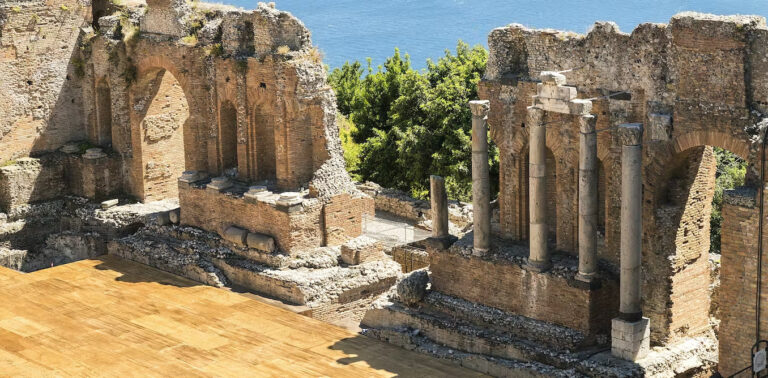The oldest song to have survived in its entirety is a first-century A.D. Greek tune known as the “Seikilos Epitaph.” The song, the melody of which is recorded, alongside its lyrics, in the ancient Greek musical notation, was found in 1883 engraved on a pillar (a stele) from the Hellenistic town of Tralles near present-day Aydın, Turkey, not far from Ephesus.
Although usually referred to as an epitaph, experts say that it is possible that it does not mark a tomb, but was merely a monument erected by Seikilos himself to commemorate his skill.
“I am a tombstone, an image,” reads an inscription. “Seikilos placed me here as an everlasting sign of deathless remembrance.”
The column also includes musical notation as well as a short set of lyrics that read: “While you live, shine / Have no grief at all / Life exists only for a short while / And time demands its toll.” The well-preserved inscriptions on Seikilos Epitaph have allowed modern musicians and scholars to recreate its plaintive melodies note-for-note.
Lyrics and melody of the ancient Greek oldest song The tombstone, or stele, was discovered in 1883 but then disappeared and was later rediscovered being used as a pedestal for a flowerpot. It is now housed in the National Museum of Denmark.
The Greek text found on the tombstone reads:
Ὅσον ζῇς φαίνου
μηδὲν ὅλως σὺ λυποῦ
πρὸς ὀλίγον ἔστι τὸ ζῆν
τὸ τέλος ὁ χρόνος ἀπαιτεῖ.
The rough translation in English:
While you live, shine
have no grief at all
life exists only for a short while
and Time demands his due.
The last two surviving words on the tombstone itself are: Σεικίλος Εὐτέρ[πῃ], meaning “Seikilos to Euterpe”; hence, according to this reconstruction, the tombstone and the epigrams thereon were possibly dedicated by Seikilos to Euterpe, who was possibly his wife.
The tombstone has an inscription on it, which reads in Greek: Εἰκὼν ἤ λίθος εἰμί. τίθησί με Σεικίλος ἔνθα μνήμης ἀθανάτου σῆμα πολυχρόνιον. A free translation of this reads: “I am a tombstone, an image. Seikilos placed me here as a long-lasting sign of deathless remembrance.”
The song is thought to be the oldest surviving complete musical composition from anywhere in the world. While there are older examples of musical notation, such as the Hurrian Song, these are fragmented and unlike the complete engraving found on the Seikilos Epitaph.
The history of music is as old as humanity itself. Archaeologists have found primitive flutes made of bone and ivory dating back as far as 43,000 years, and it’s likely that many ancient musical styles have been preserved in oral traditions.
When it comes to specific songs, however, the oldest known examples are relatively more recent. The earliest fragment of musical notation is found on a 4,000-year-old Sumerian clay tablet, which includes instructions and tunings for a hymn honoring the ruler Lipit-Ishtar.
But for the title of oldest extant song, most historians point to “Hurrian Hymn No. 6,” an ode to the goddess Nikkal that was composed in cuneiform by the ancient Hurrians sometime around the 14th century B.C.
The clay tablets containing the tune were excavated in the 1950s from the ruins of the city of Ugarit in Syria. Along with a near-complete set of musical notations, they also include specific instructions for how to play the song on a type of nine-stringed lyre.
Source: Greek Reporter







